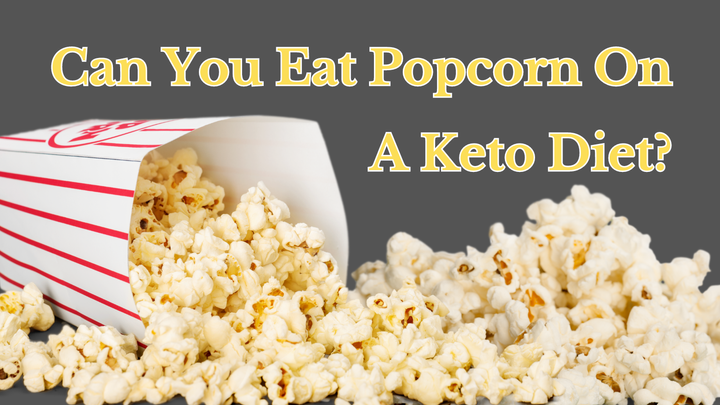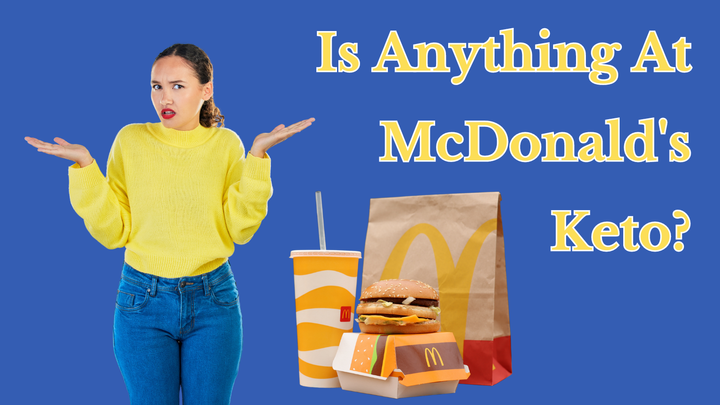From Zero to Keto: How to Begin a Keto Diet and Thrive
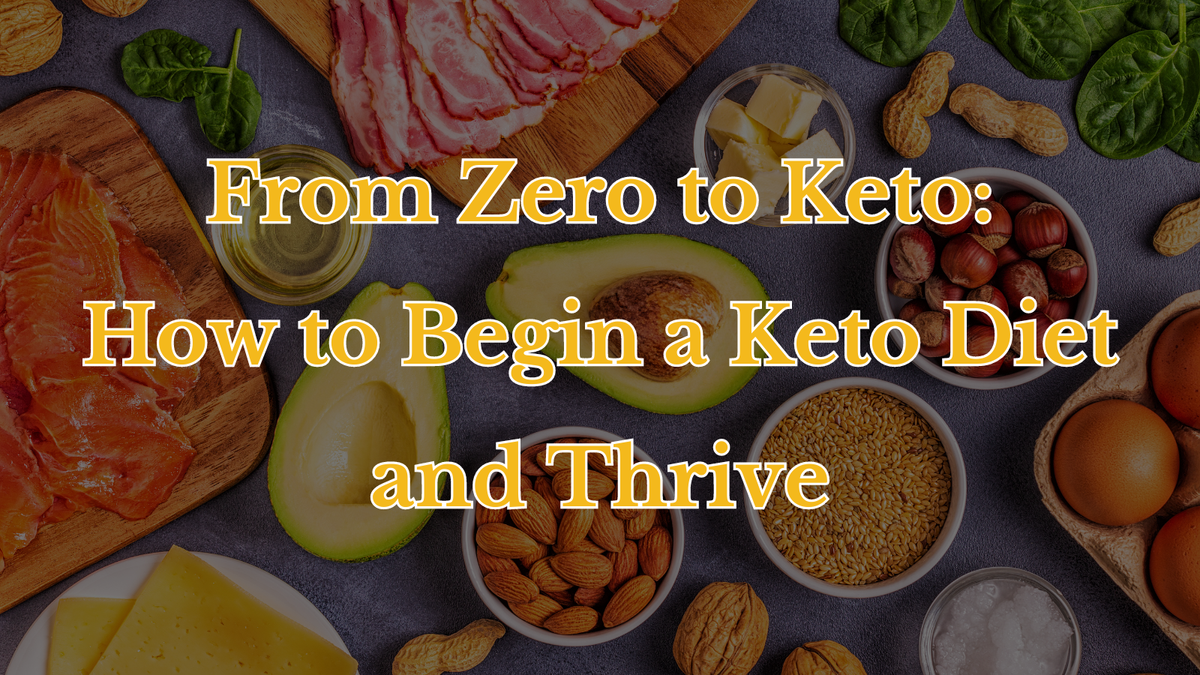
Key Takeaways
- Starting a keto diet involves cutting carbs and focusing on high-fat, moderate protein intake.
- Before beginning, clear out non-keto foods from your pantry and stock up on keto-friendly items.
- Understanding macronutrients is crucial; aim for about 70% fats, 25% protein, and 5% carbs.
- Entering ketosis means your body is burning fat for fuel instead of carbs, which can lead to weight loss and increased energy.
To kickstart your keto journey, grab your free 28-day keto meal plan with recipes and shopping lists.

Jumpstart Your Keto Journey
Embarking on a keto diet can be a transformative journey towards better health and wellness.
It’s a path that’s paved with the promise of weight loss, improved energy, and enhanced mental clarity.
But how do you start?
Controlling food intake is crucial, as the low carb diet is so filling that it can lead to weight loss without counting calories or tracking food intake.
Most importantly, by understanding that the key to success lies in preparation and the right information.
A Fresh Start: What Is Keto?
Keto is short for the ketogenic diet, a way of eating that shifts your body into a state called ketosis.
This is where the magic happens — your body starts using fat as its primary fuel source instead of carbohydrates, thanks to the high fat diet.
Think of it as flipping a switch in your metabolism for optimal fat burning.
The Right Mindset for Success
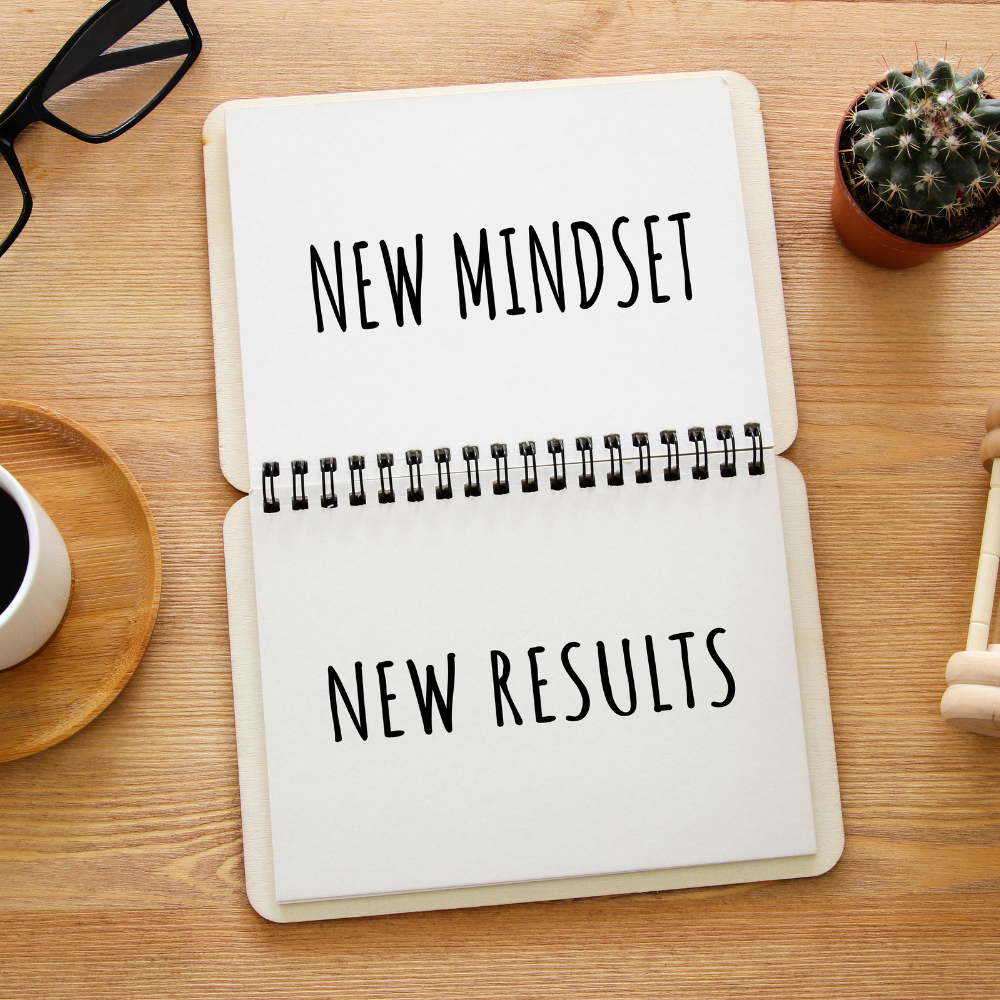
Before diving into keto, get your mind in the game.
Understand that this isn't just a diet, it's a lifestyle change.
It requires commitment and a willingness to learn.
Besides that, it's about being patient with yourself as your body adapts to new fuel sources.
Remember, it's not about perfection; it's about making progress.
Each meal is an opportunity to nourish your body in a new way.
Because your success on a keto diet is not just about losing weight, it's about gaining a healthier, more vibrant you.
Setting Up for Keto Success
Clearing the Pantry: What to Keep and What to Toss
The first step to starting a keto diet is to create a keto-friendly environment.
This means saying goodbye to high-carb snacks and hello to healthy fats and proteins.
Clear out anything with added sugar, grains, and starches.
Keep the nuts, seeds, and low-carb veggies. It's a clean sweep for a clean start.
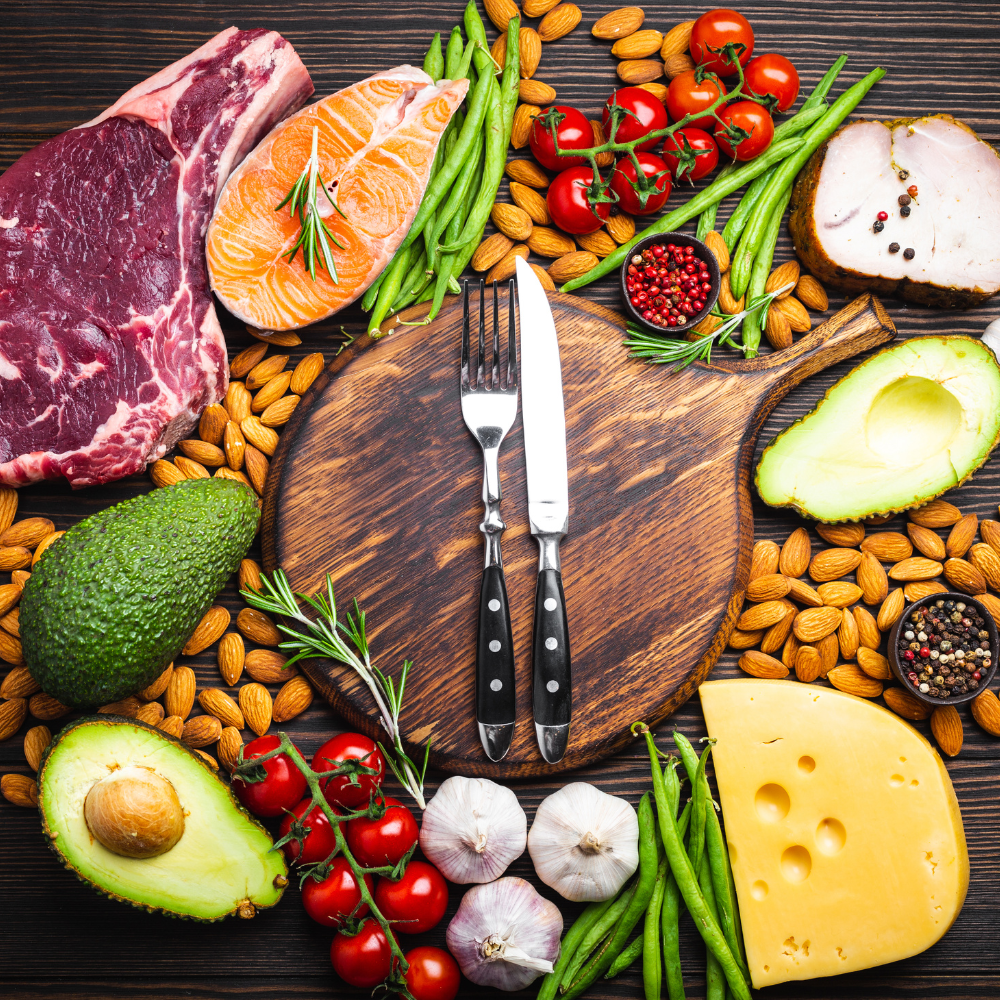
Shopping Smart: Keto-Friendly Grocery List
When you hit the grocery store, arm yourself with a list that supports your keto goals.
Focus on:
- Dietary Fat like avocados, olive oil, and butter
- Proteins such as eggs, fish, and grass-fed meats
- Low-carb vegetables like spinach, broccoli, and cauliflower
Stick to the outer aisles of the grocery store where fresh foods are typically located.
Processed foods often hide in the middle aisles, so steer clear to avoid temptation.
Mastering the Basics of Keto Eating
Understanding Macronutrients: The Keto Way
Macronutrients are the nutrients we need in large amounts: fats, proteins, and carbohydrates.
On keto, you'll be eating a lot of fats, a moderate amount of protein, and very few carbs.
Specifically, aim for your daily calories to be about 70% fat, 25% protein, and 5% carbohydrates.
This balance is key to getting your body into ketosis and keeping it there.
Keto Meal Planning 101
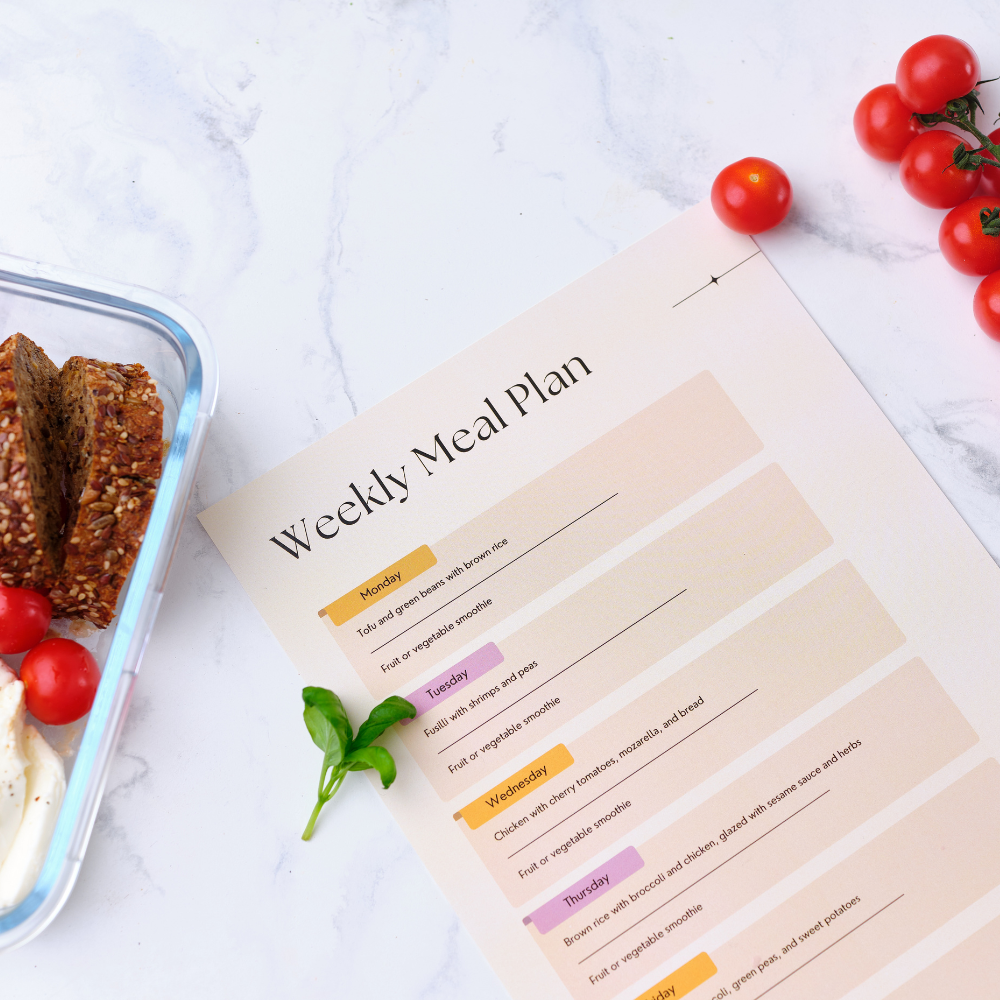
Planning is your best friend when it comes to keto meals. Start by planning out your meals for the week.
This doesn’t have to be complicated.
Focus on simple meals that balance your macronutrients.
And remember, variety is the spice of life, even on keto.
Here's an example of a simple keto meal plan for a day:
Breakfast: Scrambled eggs with spinach and avocado.
Lunch: Grilled chicken salad with olive oil dressing.
Dinner: Baked salmon with a side of asparagus.
Easy Keto Recipes to Get You Started

Feeling overwhelmed?
Don't be.
There are plenty of easy keto recipes that can help you get started.
Think bacon and eggs for breakfast, tuna salad for lunch, and steak with buttery vegetables for dinner.
And for snacks?
Cheese, nuts, and olives are all on the menu.
And here's a little secret: you don't have to give up desserts.
Keto-friendly sweeteners like stevia and erythritol mean you can still enjoy treats like chocolate mousse or cheesecake — just make sure they fit within your daily carb limit.
Stay tuned for more detailed guidance on transitioning to keto, including how to deal with side effects, how to dine out while staying on track, and how to make keto a sustainable long-term lifestyle.
And remember, to get a head start on your keto journey, be sure to claim your free 28-day keto meal plan, complete with delicious recipes and a comprehensive shopping list.
It's your blueprint for success, and it's just a click away at FreeKetoMealPlans.com.
Keto Diet Execution
Now that your kitchen is stocked and your meal plan is ready, it’s time to execute your keto diet.
It’s essential to stick to your plan, especially in the beginning, to set yourself up for success.
Remember, consistency is key.
For each meal, focus on your macronutrient ratios. Keep carbs low, protein moderate, and fats high.
Measure your portions if necessary, and don’t forget to hydrate—water is your best friend on any diet, especially keto. Tracking net carbs is crucial for achieving and maintaining ketosis, so be sure to monitor your intake to stay within the recommended limits.
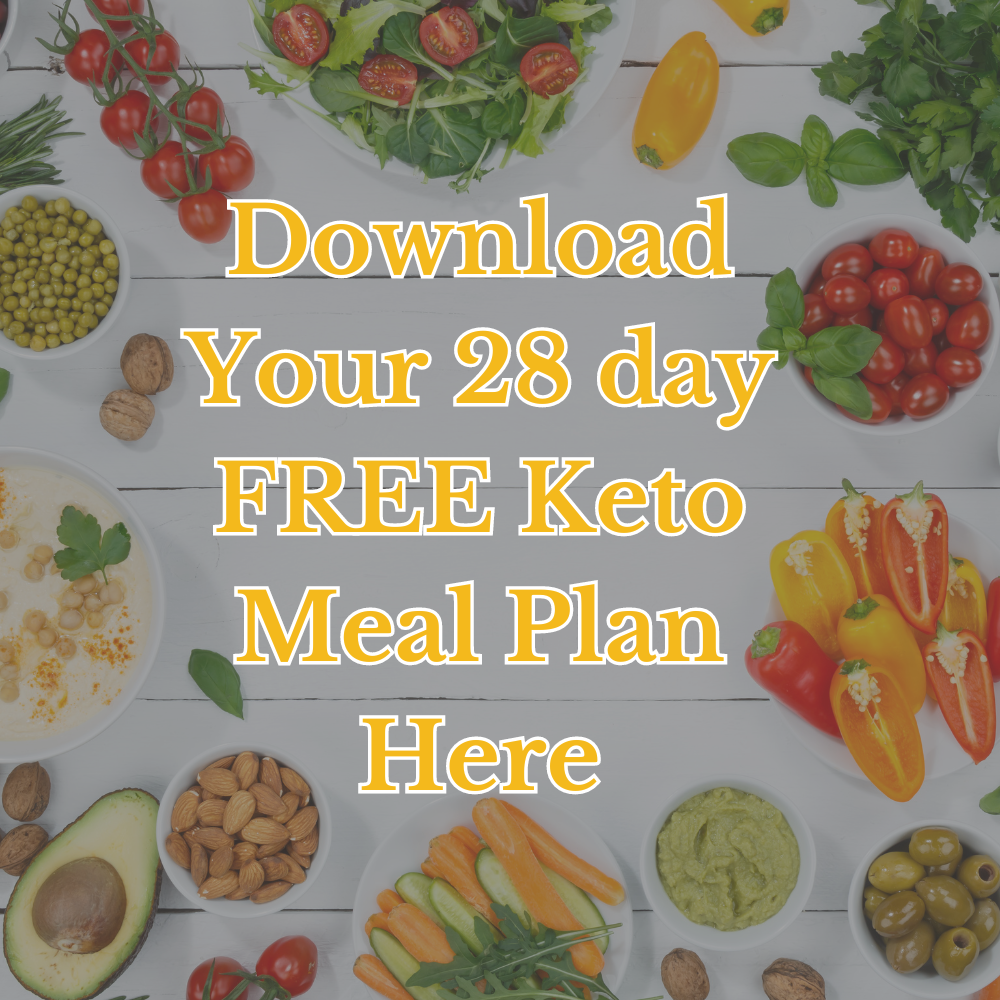
Transitioning Your Body: Entering Ketosis
The goal of the keto diet is to enter a state of ketosis, where your body burns fat for fuel.
This transition doesn’t happen overnight.
It typically takes a few days to a week for your body to shift into ketosis.
To help this process along, be diligent about keeping carbs low.
Some people find that exercise can help deplete glycogen stores and enter ketosis faster.
Above all, listen to your body and give it time to adjust to its new energy source.
Following a strict keto diet for a couple of months can be an effective way to enter and maintain ketosis. If the keto diet is difficult to stay with for the long-term, it can be used as a short-term tool to help lose weight and improve health conditions.
Dealing with the Keto Flu and Other Side Effects

As you transition to burning fat for fuel, you may experience what's known as the "keto flu."
This can include symptoms like headaches, fatigue, and irritability.
It's your body's natural reaction to carbohydrate withdrawal.
To better understand this process, you can read about the keto flu and other side effects associated with this low carb diet.
To combat these side effects:
- Stay hydrated
- Make sure you're getting enough electrolytes like sodium, potassium, and magnesium
- Eat enough fat to feel satisfied
These symptoms are usually temporary and should subside within a week or so.
Hang in there—it's a sign that your body is on its way to becoming a fat-burning machine.
Tracking Your Progress: Tips and Tricks
Tracking your progress is vital to stay motivated. You can do this in a few ways:
- Take body measurements and photos to compare over time
- Use a food tracking app to ensure you're hitting your macros
- Monitor your energy levels and how you feel overall
Remember, weight isn't the only indicator of success.
Non-scale victories, like fitting into smaller clothes or feeling more energetic, are just as important.
And if you're looking for a structured way to track your progress, consider downloading a comprehensive meal plan that includes tracking tools.
It can simplify the process and help keep you on track. You can find such a plan at PSKeto.com.
Staying Keto-Committed Long Term

Staying committed to the keto diet long-term requires a mix of discipline and flexibility.
It's about making this lifestyle work for you and adapting as needed.
Overcoming Plateaus: Tweaking Your Diet for Continued Success
Weight loss plateaus are a common part of any weight loss journey.
If you hit a plateau on keto:
- Reassess your macros to ensure you're in the right ratios
- Consider intermittent fasting to boost ketosis
- Try new recipes to keep things interesting
Small adjustments can make a big difference. Don't be afraid to experiment to find what works best for you.
Eating Out and Social Events: Staying Keto on the Go
Eating out and attending social events can be challenging on keto diets, but it's not impossible.
Here are some tips:
- Look up the menu ahead of time and plan what you'll eat
- Don't be afraid to ask for substitutions to make a dish keto-friendly
- Focus on meat and veggie dishes, and avoid sauces and dressings that could contain hidden sugars
Remember, you're in control of your diet, not the other way around.
With a little planning, you can enjoy social events without derailing your progress.
Reaping the Benefits Beyond Weight Loss
Ketogenic diets are well-known for their weight loss benefits, but they offer so much more.
Many people experience increased energy, better mental clarity, and improved overall health.

Boosted Mental Clarity and Improved Energy Levels
Once you're fully adapted to ketosis, you may notice a significant boost in mental clarity and energy levels.
This is because your brain is using ketones for fuel, which is a more efficient energy source than glucose.
Additionally, without the ups and downs of blood sugar spikes, you're likely to feel more stable throughout the day.
This can lead to increased productivity and a better mood.
And the best part?
You can start experiencing these benefits within the first few weeks of starting your keto journey.
Just remember to stick to your plan and trust the process.
So, if you're ready to begin your keto journey and thrive, don't wait any longer.
Your body—and mind—will thank you.
And to make sure you're off to a great start, don't forget to download your free 28-day keto meal plan at PSKeto.com.
It's packed with all the resources you need to succeed, including delicious recipes and handy shopping lists.
Embrace the keto lifestyle today and become the success story you've always wanted to be.
It's more than a diet; it's a journey to a healthier, happier you.
With a well-formulated keto diet, you're not just losing pounds—you're potentially reducing the risk of chronic diseases and improving your overall health.
That's a win that goes far beyond the scale.
Long-term Health Improvements and Disease Management

Many people find that low carb diets, including a keto diet, don’t just help them lose weight.
They also help manage and sometimes improve various health conditions.
Improved blood sugar control, better lipid profiles, and reduced symptoms of diseases like epilepsy are just some of the potential benefits reported by those who have embraced the keto lifestyle.
Your 28-Day Free Keto Meal Plan Awaits!
Now that you understand the benefits and the basics of starting a keto diet, it's time to take action.
The best part?
You don't have to do it alone. Your free 28-day keto meal plan is ready to guide you through each step of the way.
What's Included in Your Keto Gift?
When you claim your free gift, you'll receive:
- An easy-to-follow 28-day meal plan
- Delicious recipes complete with pictures
- Comprehensive shopping lists for hassle-free grocery runs
- Guidance on how to balance your macronutrients
- Tips for dining out and managing social situations
Everything you need for a successful keto journey is neatly packed into this plan.
And it's yours, absolutely free.
Claim Your Free Keto Meal Plan
Don't let this opportunity slip by. Claim your free 28-day keto meal plan now and start your journey towards a healthier, more energetic you. Just head over to PSKeto.com and let us know where to send your plan. It's that easy!
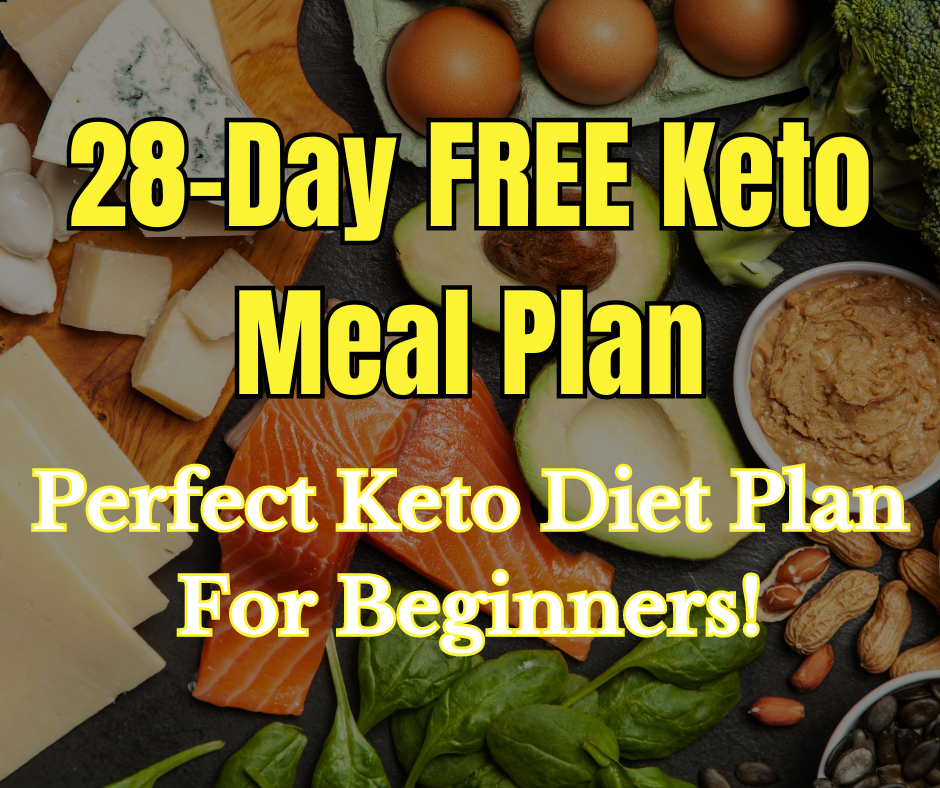
Frequently Asked Questions (FAQ)
How Long Does It Take to Enter Ketosis?
Entering ketosis can take anywhere from a couple of days to a week, depending on various factors like your metabolism, daily carb intake, and physical activity levels.
Consistently keeping your carbs low is the key to getting there.
Can I Eat Fruit on a Keto Diet?
While most fruits are high in carbs, there are some that you can enjoy in moderation on a keto diet.
Berries like strawberries, blueberries, and raspberries can be eaten in small amounts and are a great source of antioxidants.
What Are the Main Foods to Avoid on Keto?
On a keto diet, you should avoid high-carb foods such as:
- Sugary foods like soda, candy, and ice cream
- Grains and starches like bread, pasta, and rice
- Fruit juices and high-carb fruits like bananas and grapes
- Starchy vegetables like potatoes and corn
- Beans and legumes
How Do I Know If I'm on the Right Track?
You'll know you're on the right track when you start seeing and feeling the benefits.
These can include weight loss, increased energy, and improved mental clarity.
Using a ketone meter can also help you confirm that you're in ketosis.
Are There Any Long-Term Risks Associated with Keto?
While the keto diet is safe for most people, it's always best to consult with a healthcare professional before making any significant dietary changes, especially if you have pre-existing health conditions.
Monitoring your health and nutrition is important to ensure your diet remains balanced and beneficial in the long term.
There you have it, your comprehensive guide to starting a keto diet and thriving.
Remember, the journey to a healthier you starts with a single step—and with your free 28-day keto meal plan, you're already on the path to success.
Visit PSKeto.com to get started, and here's to your health and happiness on keto!
